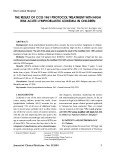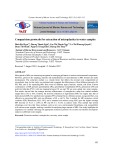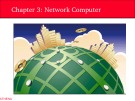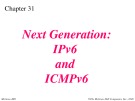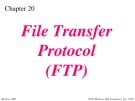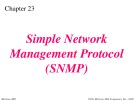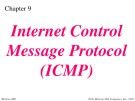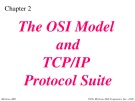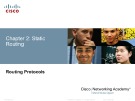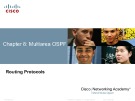
Protocol type
-
Leukemia is one of the most common types of cancer among children around the world. Acute lymphoblastic leukemia (ALL) accounts for approximately 75% of all cases of childhood leukemia. Acute lymphoblastic leukemia (ALL) remains the most common malignancy in children.
 5p
5p  vinatisu
vinatisu
 29-08-2024
29-08-2024
 0
0
 0
0
 Download
Download
-
In this study, we evaluated and compared the effectiveness of four different protocols (D, MJ, MA, and S) for separating MPs from water of different types (brackish, marine, and river). Known combinations of MP particles (polyethylene (PE), polyethylene terephthalate (PET), polystyrene (PS) and polyvinyl chloride (PVC) with size ranging between 150 μm and 700 μm were spiked into water samples. Our results showed that the average recovery effectiveness of microplastics using four studied methods ranged from 53% to 86%.
 10p
10p  dianmotminh02
dianmotminh02
 03-05-2024
03-05-2024
 5
5
 3
3
 Download
Download
-
The main aims of this study are to: understand the phenomena of isolated mixing regions (IMRs) in Newtonian fluids agitated in mechanically stirred vessels, in particular, the formation of core torus, using experimental studies; investigate the behavior of IMRs structures by manipulating the operating variables such as impeller rotational speed and direction, as well as geometrical variables such as impeller types and baffle location; investigate the temporal chaotic mixing using different speed modulation protocols.
 94p
94p  runthenight07
runthenight07
 01-03-2023
01-03-2023
 10
10
 3
3
 Download
Download
-
Bài giảng Kỹ thuật chụp MRCP trong bệnh u nang ống mật chủ ở trẻ em tại Viện Nhi Trung ương trình bày các nội dung chính sau: Chụp MRCP nhằm đánh giá chính xác hình ảnh về đường mật, phân loại các yếu tố ảnh hưởng đến chất lượng ảnh CHT và kiểm soát các yếu tố.
 16p
16p  vimichigan2711
vimichigan2711
 22-03-2021
22-03-2021
 19
19
 1
1
 Download
Download
-
Chapter 5: Transport Layer UDP and TCP. Overview of Transport Layer, UDP Protocol, UDP Protocol, types of data deliveries, port numbers, IP addresses versus port numbers, IANA ranges, socket, address, Multiplexing and demultiplexing, error control, position of UDP, TCP, and SCTP in TCP/IP suite.
 59p
59p  registergmxt
registergmxt
 27-05-2018
27-05-2018
 54
54
 2
2
 Download
Download
-
Lecture Basic network management: Chapter 3 - Network computer. After studying this chapter you will be able to understand: What is a Network? Why we use a Network? Advantages of LAN Types of Network.
 25p
25p  nhanmotchut_3
nhanmotchut_3
 20-10-2016
20-10-2016
 66
66
 2
2
 Download
Download
-
In this chapter you will learn: Understand the shortcomings of IPv4; know the IPv6 address format, address types, and abbreviations; be familiar with the IPv6 header format; know the extension header types; know the differences between ICMPv4 and ICMPv6; know the strategies for transitioning from IPv4 to IPv6.
 63p
63p  tangtuy09
tangtuy09
 26-04-2016
26-04-2016
 59
59
 3
3
 Download
Download
-
Upon completion you will be able to: Understand the connections needed for FTP file transfer be familiar with FTP commands and responses know the differences between FTP and TFTP be familiar with TFTP message types understand TFTP flow and error control.
 26p
26p  tangtuy09
tangtuy09
 26-04-2016
26-04-2016
 57
57
 3
3
 Download
Download
-
The chapter has several objectives: To discuss SNMP as a framework for managing devices in an internet using the TCP/IP protocol suite; to define a manager as a host that runs SNMP client and any agents as a router or host that runs a server program; discuss SMI and MIB, which are used by SNMP; to show how SMI names objects, defines the type of data, and encodes data;...
 38p
38p  tangtuy09
tangtuy09
 26-04-2016
26-04-2016
 59
59
 3
3
 Download
Download
-
After studying this chapter you will be able to: Be familiar with the ICMP message format, know the types of error reporting messages, know the types of query messages, be able to calculate the ICMP checksum, know how to use the ping and traceroute commands, understand the modules and interactions of an ICMP package.
 51p
51p  tangtuy09
tangtuy09
 26-04-2016
26-04-2016
 52
52
 4
4
 Download
Download
-
Upon completion you will be able to: Know the purpose of IGMP, know the types of IGMP messages, understand how a member joins a group and leaves a group, understand membership monitoring, understand how an IGMP message is encapsulated, understand the interactions of the modules of an IGMP package.
 28p
28p  tangtuy09
tangtuy09
 26-04-2016
26-04-2016
 44
44
 3
3
 Download
Download
-
Learning objectives of this chapter include: Understand the architecture of the OSI model, understand the layers of the OSI model and their functions, understand the architecture of the TCP/IP Protocol Suite, differentiate between the OSI model and the TCP/IP Suite, differentiate between the three types of Internet addresses.
 36p
36p  tangtuy09
tangtuy09
 26-04-2016
26-04-2016
 58
58
 3
3
 Download
Download
-
Upon completion you will be able to: Understand the different versions of wired Ethernet, understand wireless Ethernet, understand the types of point-to-point WANs, understand the types of switched WANs, especially ATM, differentiate between repeaters, bridges, routers, and hubs.
 60p
60p  tangtuy09
tangtuy09
 26-04-2016
26-04-2016
 34
34
 3
3
 Download
Download
-
Describe the structure of a network, including the devices and media that are necessary for successful communications; explain the function of protocols in network communications; explain the advantages of using a layered model to describe network functionality;... Inviting you to refer.
 102p
102p  youcanletgo_01
youcanletgo_01
 04-01-2016
04-01-2016
 68
68
 5
5
 Download
Download
-
Upon completion of this chapter, you will be able to: Explain the role of Data Link layer protocols in data transmission, describe how the Data Link layer prepares data for transmission on network media, describe the different types of media access control methods,... Inviting you to refer.
 96p
96p  youcanletgo_01
youcanletgo_01
 04-01-2016
04-01-2016
 64
64
 5
5
 Download
Download
-
After completing this chapter, students will be able to: Describe the role of dynamic routing protocols and place these protocols in the context of modern network design, identify several ways to classify routing protocols, describe how metrics are used by routing protocols and identify the metric types used by dynamic routing protocols,...
 50p
50p  youcanletgo_01
youcanletgo_01
 04-01-2016
04-01-2016
 75
75
 6
6
 Download
Download
-
In this chapter, you learned to: Describe OSPF terminology and operation within various enterprise environments, describe the function and operation of packets in OSPF routing, configure and verify basic OSPF, describe and configure OSPF in various WAN network types,...
 192p
192p  youcanletgo_01
youcanletgo_01
 29-12-2015
29-12-2015
 41
41
 2
2
 Download
Download
-
Chapter 2 "Static Routing" include objectives: Explain the advantages and disadvantages of static routing, explain the purpose of different types of static routes, configure IPv4 and IPv6 static routes by specifying a next-hop address,...
 58p
58p  youcanletgo_01
youcanletgo_01
 29-12-2015
29-12-2015
 61
61
 3
3
 Download
Download
-
The following will be discussed in this chapter: Multiarea OSPF implementation, types of LSAs exchanged between areas, configuring OSPFv2 and OSPFv3, verifying an OSPFv2 and OSPFv3 configuration, summarizing OSPF routes between areas.
 41p
41p  youcanletgo_01
youcanletgo_01
 29-12-2015
29-12-2015
 62
62
 4
4
 Download
Download
-
After studying this chapter you will be able to: Describe how OSPF creates neighbor adjacencies in a multiaccess network, describe the method and command used to propagate a default route within the OSPF area for IPv4 and IPv6, examine the methods of fine-tuning OSPF for IPv4 and IPv6 on interfaces,...
 31p
31p  youcanletgo_01
youcanletgo_01
 29-12-2015
29-12-2015
 41
41
 3
3
 Download
Download
CHỦ ĐỀ BẠN MUỐN TÌM








